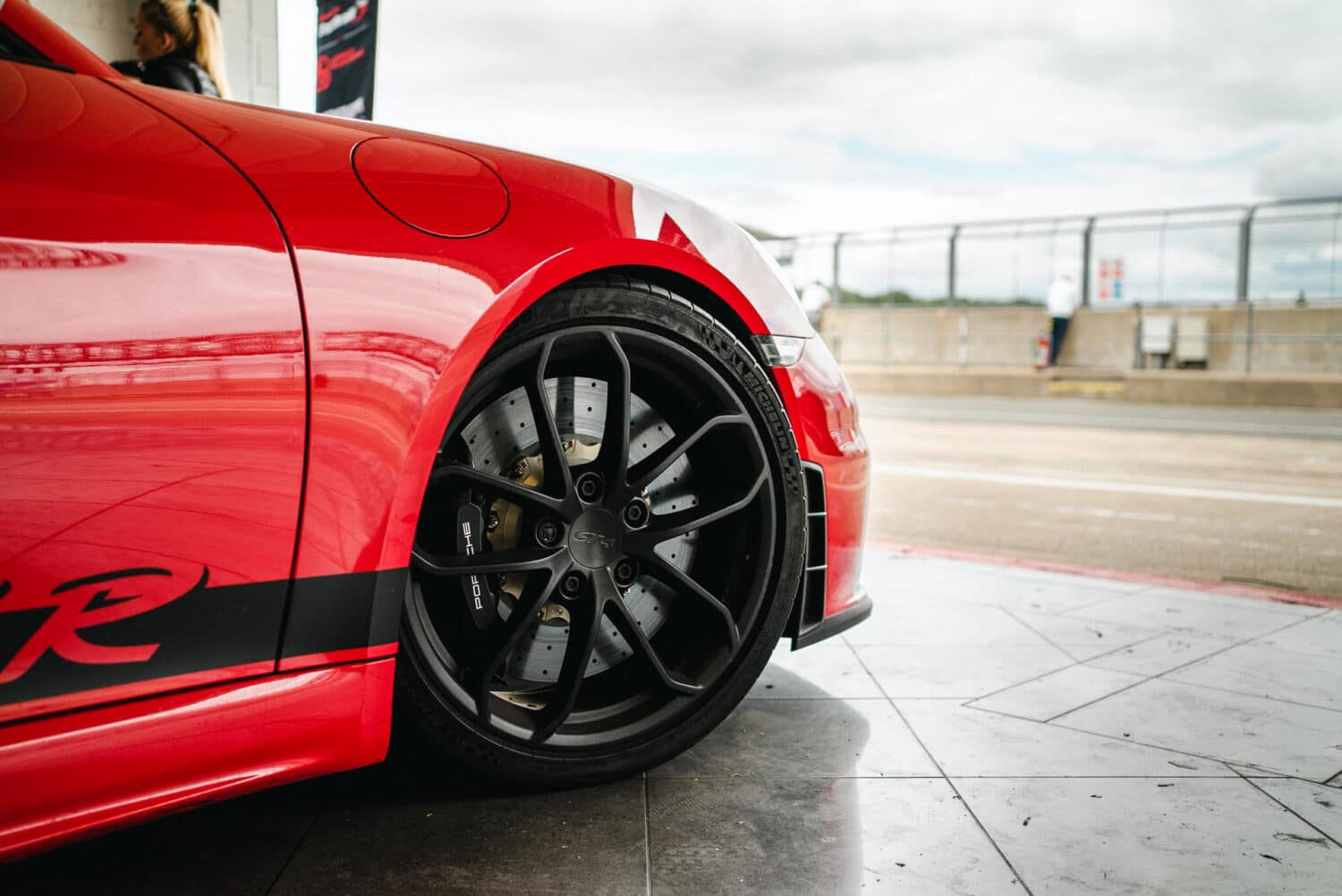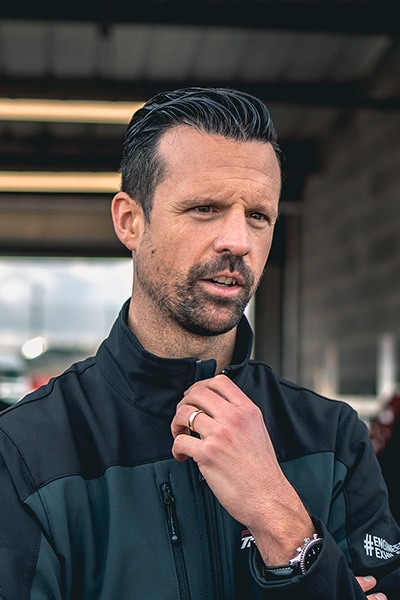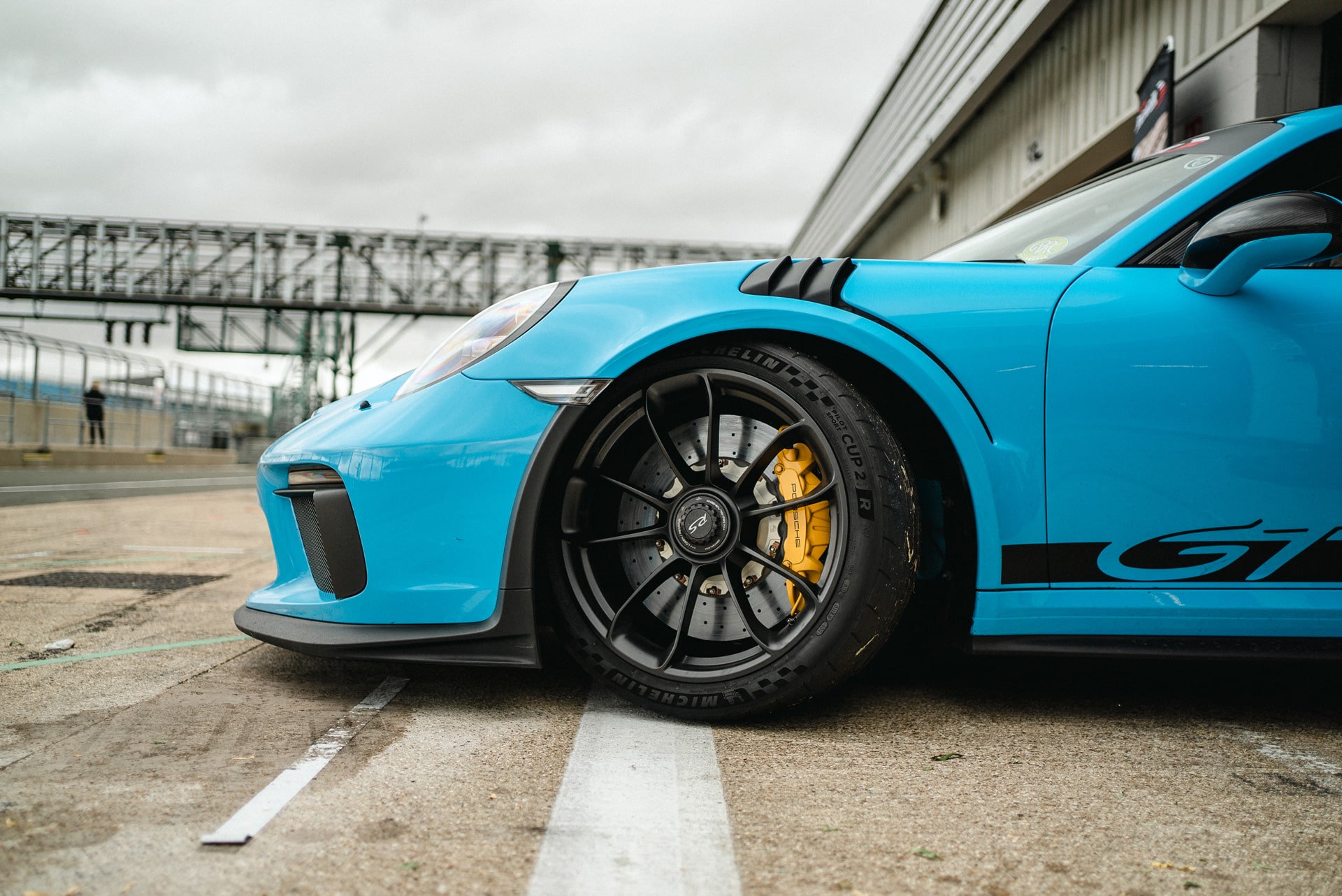
What tyre pressures should my Porsche have on a trackday?
“What pressures should I be running?!” This must be the most commonly asked question we are asked when we attend trackdays with our ‘Porsche Drivers Lounge’. It is also a very valid and important question to ask. The grip the tyres generates is all that will be keeping you and your car on the circuit. As such, it is vital that the tyres are in good condition and checked and monitored throughout the day. Here are the basics of how to ensure the tyres are giving you their best:
Pre-trackday check of the tyres should include:
- Check the age of the tyres (see the sidewall for information). Most manufacturers recommend not using a tyre older than 7 years as the rubber can perish, depending on where the car has been stored. We would suggest tyres that are going to be used on track should ideally be less than 4 years old as their performance can degrade with age, which will affect levels of grip but could also increase the risk of a catastrophic failure.
- Check the side walls for damage. If you run your hand around the tyre, check for any bulges (these can be caused by potholes) or any cuts in the tyre wall potentially caused by going over debris on the road. Both can cause the tyre to fail. If your tyres have been driven on whilst having very low pressures, the inside of the tyre wall could be damaged which may not be immediately obvious. If in any doubt, it is best to replace the tyres.
- Tread condition and wear – check the tyre for damage and tread depth. Does it have enough tread to get to the track, a whole day of laps and then get you home safely whilst still having more than 1.6mm (legal limit)? Are the tyres wearing evenly – it is quite common for Porsches to run ‘negative’ camber to provide extra grip at the limit, however, a downside is that the inner edges of the tyres will wear quicker than the outside. So, if you don’t have access to a ramp, run your hand around the inner edge of the rear tyres and turn the steering to full lock to check the fronts.
- Check the type of tyre. It should be pretty obvious but a ‘winter’ tyre will be fabulous in the snow, but a 30-degree Celsius trackday at Silverstone will wear the tyre very quickly and end your day, or worst still end up in you falling off the track. On the flip side, whilst a Cup2 semi-slick tyre is great on a warm day, they have less grip on a low temperature, wet day, than a regular all-season road tyre like a Pilot Sport tyre. The Cup 2R tyres that are road legal but extremely high-performance track tyres will struggle to get heat and any significant grip in these conditions. They also take longer to get up to full operating temperature than the regular Cup2 tyres so this needs to be considered when exiting the pits for the first laps of the day!
- Ensure that you take to a good quality tyre pressure gauge and ideally an electric tyre pump to track with you. The former will allow you to measure and adjust pressures to optimise during the day. The latter will allow you to pump tyres back up to road pressures for your drive home.
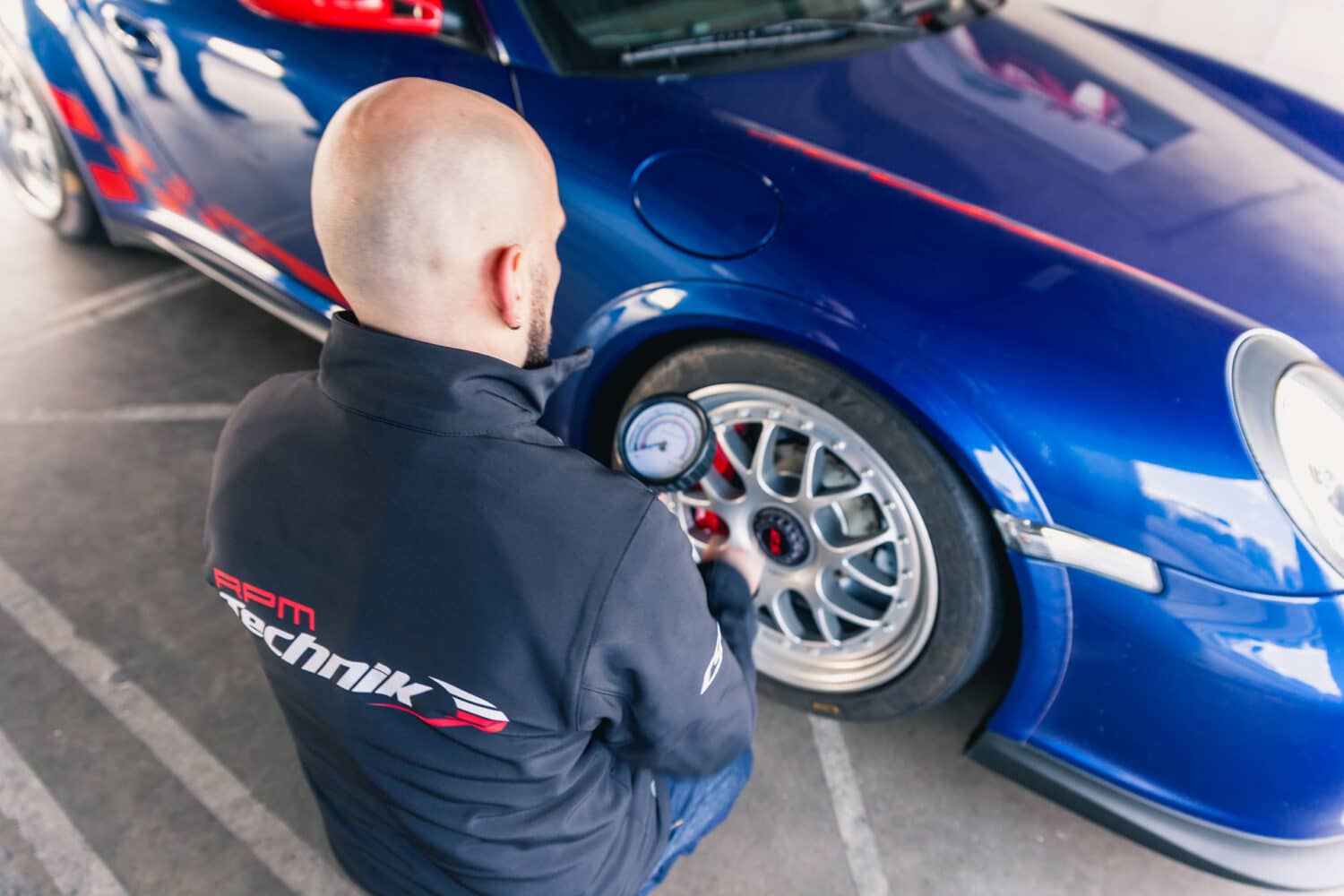
Start off slow and build up
- Your tyres will get much hotter on track than they will on a normal road drive. As temperature increases, the pressure of the air inside the tyre will increase (Gay-Lussac’s law). This will cause the tyre to ‘balloon’ and the contact patch of the tyre will reduce as only the middle part of the tyre will be in contact. This will reduce your available grip and cause the car to either understeer, oversteer, or both! Temperature and pressure management on track is one of the most important things you can do.
- Optimum tyre pressures on track will vary depending on conditions. If it is a cold/wet day you will potentially want to run near enough road tyre pressures as your hot pressures. However, on dry hot days, you will want to run slightly lower pressures. You will find that once you have done a few track sessions and the pressures have stabilised and don’t need further adjustment, then you are potentially at optimum pressures. Be warned though, there will be a minimum tyre pressure for all tyres (which varies), and if you run pressures too low there is a risk of damage to the tyre or breaking the bead between tyre and wheel causing a complete deflation.
- When you first arrive on track check the wheels are torqued up correctly – if you don’t know how, ask a professional or one of the RPM Technik team if we are there. Set your tyre pressures to either the manufacturer road pressures (cold/wet days) or 2/3 psi below for dry/hot days. The pressures can be found in the door shut, handbooks or under the fuel filler cap. Head out on circuit for around 2-3 laps to get some temperature into the tyres. It is important to stay off the kerbs and build speed up rather than go for a lap record on Lap 1. Once you return to the pits, check the pressures of all four tyres (best to leave the valve caps off and keep somewhere safe, you will be checking the tyres a lot). The pressures will have gone up so bleed them back down to the pressure you set at the beginning of the session.
- Go out for a second session and as the tyre temperatures are now higher you can maintain a higher pace and potentially stay out for a little longer. Bring the car back in and check the pressures again. If they have gone up again you may need to drop them down a little further than the initial target pressure before you head out again. What you are trying to achieve is the ability to set a hot tyre pressure, go out and drive a sensible stint on track and then come back in and the pressures have stayed constant.
- Each car, tyre and driver combination may need a slightly different target pressure, so if you have the opportunity, it is a good idea to come and speak to a member of RPM Technik staff in the Porsche Drivers Lounge and we can help you work out the correct target pressures for you. We can also help you optimise this over the day.
- RPM Technik have tyre temperature probes that can measure tyre temps across the tread of the tyre. This can be really useful in understanding if your geometry and wheel alignment is making the most of the tyre that is available to it. This is a really interesting topic and a whole blog post on its own!
- At the end of the day ensure that you remember to put the air you have bled out, back into your tyres for the return drive home. They will cool down pretty quickly and driving with too low tyre pressures on the road will prematurely wear the tyre and may also increase the risk of picking up a puncture. Remember that if you set your road pressures when the tyres are still red hot from track use, you will end up putting too little pressure in the tyre. As you drive home the tyre will cool and the pressure that was correct when you left track will drop. As the temperature drops, the pressure drops (our friend Gay-Lussac again). So you will need to over-inflate the tyre a little to allow for this effect when cooling.
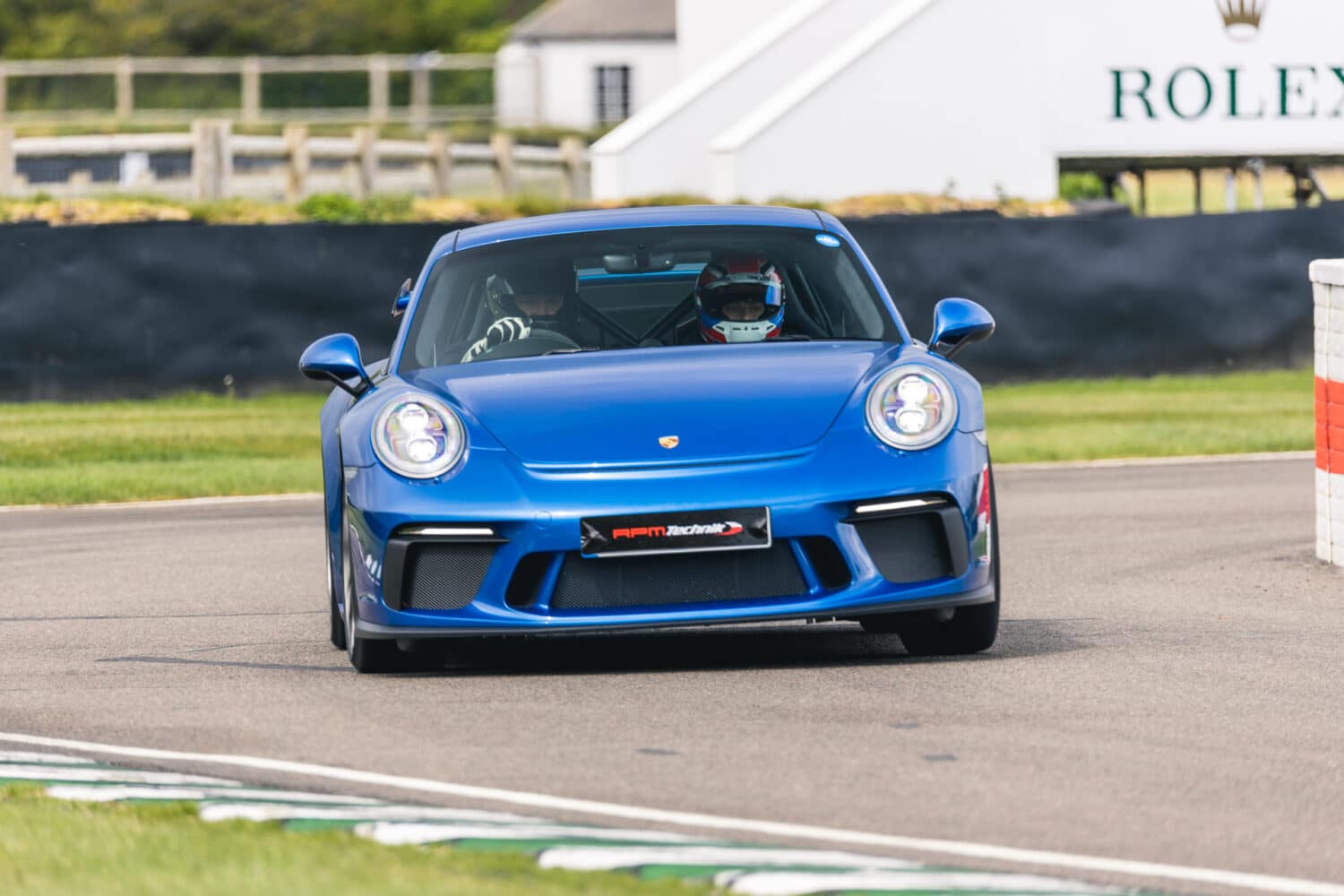
Whilst this is meant as a basic guide to assist you, feel free to come and see any team members in the RPM Technik Drivers Lounge at events we are attending, who can answer and more in depth questions. Safe driving!
SPEAK WITH OUR UPGRADES TEAM TODAY
To discuss your Porsche tyre pressure, please contact our upgrades team on
+44 (0)1296 663 824 or send us an enquiry online.
